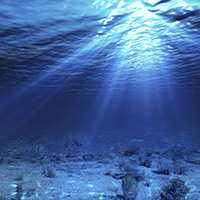Guiding the development of Marine Protected Area networks in the Mediterranean and the Black Sea
Around 4 % of European waters are now designated Marine Protected Areas (MPAs) within the Natura 2000 network. However, as the EU’s Marine Strategy Framework Directive (MSFD) acknowledges, something more comprehensive than the existing marine MPA network is needed if we are to deliver representative and ecological coherent networks of MPAs. The COCONET (COast to COast NETworks of marine protected areas) project is exploring the issue of MPA networks in the Mediterranean and the Black Sea. The ultimate aims of the project are to enhance policies of effective environmental management; to ascertain if the existing MPAs in those seas are sufficient for ecological networking and to suggest how to design further protection schemes based on effective exchanges between protected areas. Now in the third year of the project, the COCONET team is currently preparing guidelines for the establishment of MPA networks based on connectivity among different areas. It is also developing a detailed wind 'atlas' of both basins to test the feasibility of establishing offshore wind farms (OWFs) in these regions. Not forgetting the importance of involving future generations, project partners have also recently launched COCONET Kids, an online resource for teachers and children complete with games, activities and a teachers zone. In order to prepare the guidelines for the establishment of MPA networks, the COCONET project partners, comprising 39 institutes and small and medium-sized enterprises from 22 countries, are identifying a set of locations that are connected with each other, sharing common ecosystem features. The aim is to identify the physical and biological processes and connections that govern patterns of biodiversity distribution. With regard to offshore wind farms in the Mediterranean or the Black Sea, the team is working to hypothesize what the impact of developing them might be on the marine ecosystem. According to COCONET, offshore wind farms actually enhance marine biodiversity by introducing submerged structures on which bottom-dwelling organisms can settle and, in turn, attract fish populations, while discouraging trawling on the sea bottom. COCONET seeks to calculate the capacity and sustainability of offshore wind farms for the next generation. A team member stated, ‘We know that the coordination for integrated MPA/OWF network is essential and concerted actions are needed for the sustainable use of our beautiful seas.’ Two pilot projects have also already been set up for the Black Sea and Mediterranean Sea. These projects are intended to be the areas where concepts developed by the COCONET team can be applied in the real world. Activities in the pilot projects to date include the use of oceanographic vessels for open and deep sea operations, with smaller craft for coastal studies. For more information, please visit: COCONET http://www.coconet-fp7.eu/
Countries
Italy



